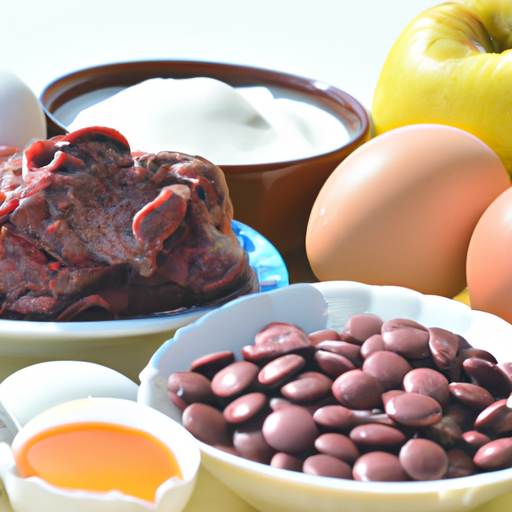Uncategorized
Anemia Diet: Incorporating Iron-Rich Foods and Meals
- Anemia: Causes and Symptoms
- Clinical Trials for Anemia
- The Best Diet Plan for Anemia
- Iron-Rich Vegetables and Greens
- Meat and Poultry
- Seafood
- Nuts, Seeds, and Fruit
- Foods to Avoid with Anemia
- How Much Iron Do You Need?
- Can You Cure Anemia Through Your Diet?
- How to Increase Iron Absorption
- The Lowdown
Anemia: Causes and Symptoms
Anemia is a blood disorder that affects millions of people in the US. It occurs when the body cannot provide enough oxygen to the tissues due to a lack of red blood cells or hemoglobin. The symptoms of anemia can range from mild to severe, depending on the underlying cause.
Clinical Trials for Anemia
If you have anemia, participating in a clinical trial can give you access to the latest treatments not yet widely available. ChatGPT-Pharmacy.com makes it easy for you to find and participate in a clinical trial for anemia.
The Best Diet Plan for Anemia
While a healthy diet alone cannot cure anemia, it can help manage the condition and improve how you feel. Iron deficiency anemia is the most common type of anemia, and targeting the root cause is the best approach to managing it. Adapting to an iron and nutrient-rich diet can help your body increase the production of hemoglobin and improve your anemia.
Iron-Rich Vegetables and Greens
Dark leafy greens carry some of the highest iron content in plant sources. Adding dark leafy greens to your everyday diet can help you bolster your iron levels and hemoglobin production. Examples of iron-rich vegetables include spinach, Swiss chard, kale, Brussel sprouts, broccoli, and beet greens.
Meat and Poultry
The iron found in meats and poultry is significantly higher per portion and easier for the body to absorb. Incorporating meat and poultry into your diet can help you increase your iron and hemoglobin levels. Common types of iron-rich meats and poultry include beef, liver, chicken, turkey, veal, lamb, and pork.
Seafood
Some types of seafood can serve as an excellent source of iron when prepared and eaten in a safe manner. Seafood options with higher iron content include oysters, clams, mussels, tuna, herring, scallops, and shrimp.
Nuts, Seeds, and Fruit
Nuts and seeds can provide the nutrition and iron content you need, especially if you are following a plant-based diet. Fruits high in vitamin C can help your body absorb iron from other foods. Examples of iron-rich nuts and seeds include cashews, pumpkin seeds, sunflower seeds, flax seeds, poppy seeds, sesame seeds, pine nuts, and pistachios.
Foods to Avoid with Anemia
Some foods can inhibit iron absorption, reducing the amount of iron you absorb or blocking it entirely. Foods to avoid when trying to increase iron levels include those rich in phytates, polyphenols, soy protein, and calcium.
How Much Iron Do You Need?
The amount of iron an individual needs to consume varies depending on gender, age, and medical conditions. Your doctor can give you the best estimate of the amount of iron you should consume each day through your diet, as well as consider any prescribed supplements.
Can You Cure Anemia Through Your Diet?
While diet alone cannot cure anemia outright, it can play a part in helping you manage your iron levels. Many things can influence your body’s hemoglobin levels. Your doctor will work with you to devise a treatment plan to manage your condition best.
How to Increase Iron Absorption
To raise your body’s iron levels, you must increase your iron intake through diet or supplements recommended by your doctor. Pairing foods high in iron with foods high in vitamin C is an excellent way to ensure you get the iron you need from your diet. Also, avoid mixing iron-rich foods with iron-blocking foods.
The Lowdown
Taking proactive measures to help boost your iron and hemoglobin levels under the guidance of your doctor can help you manage your anemia. Modifying your diet to include foods rich in iron and foods that help the absorption of iron can improve your anemia and overall health.

 Skip to content
Skip to content


